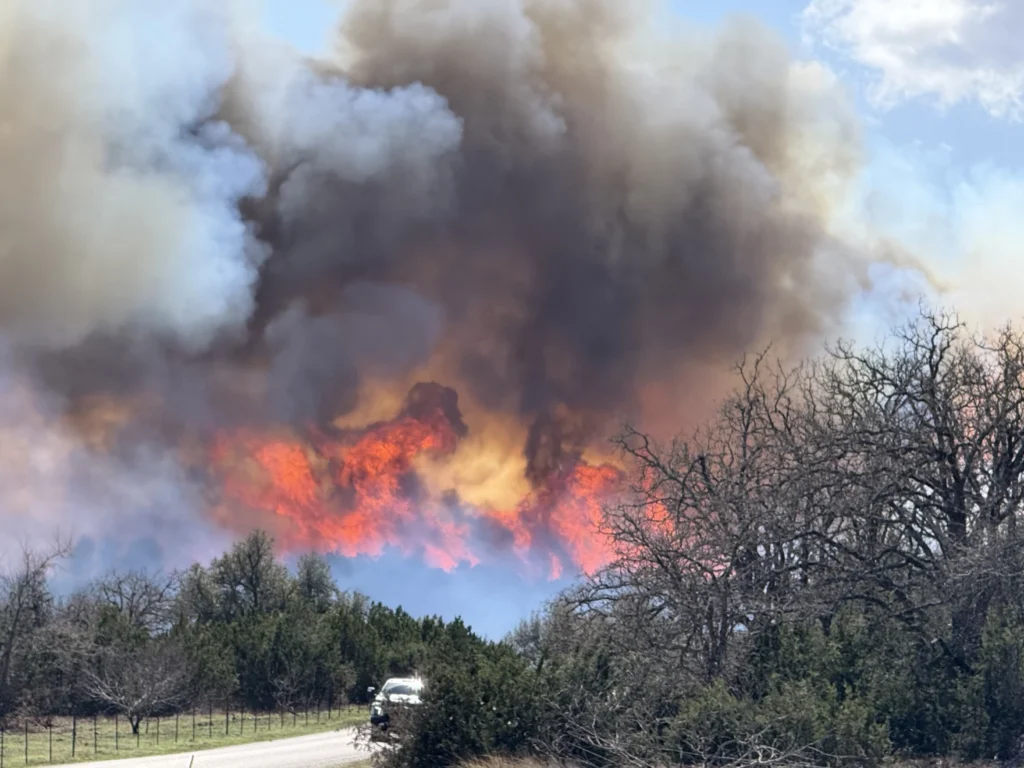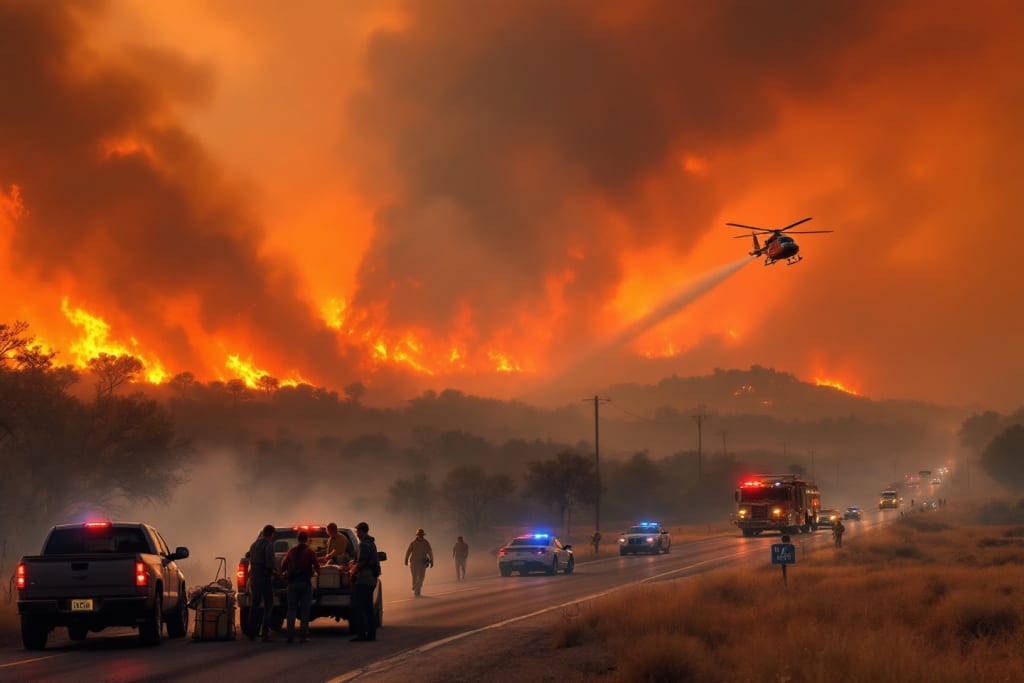Massive Wildfire Near Fredericksburg Forces Evacuations and Declared a Disaster
A massive wildfire known as the Crabapple Fire has erupted northeast of Fredericksburg, Texas, forcing evacuations and prompting a disaster declaration. As of the latest reports, the fire has scorched approximately 8,640 acres and remains at 0% containment, posing a severe threat to homes, infrastructure, and wildlife in the area.
The Origin and Spread of the Fire
The fire began on Saturday around 1 p.m. in the vicinity of the 8700 block of Lower Crabapple Road. Strong winds, dry conditions, and high temperatures have fueled the rapid spread of the fire, making it difficult for firefighters to establish containment lines. The blaze has quickly moved across large swaths of land, burning grass, brush, and trees in its path.

Authorities believe that weather conditions played a significant role in the fire’s aggressive behavior. Gusty winds exceeding 20 mph and low humidity levels have made firefighting efforts challenging, as embers travel and ignite new fires. The Texas A&M Forest Service has been closely monitoring the situation, deploying resources to combat the flames.
Evacuations and Emergency Response
Due to the fire’s rapid spread, officials have issued mandatory evacuation orders for residents living between Highway 16 North and FM 1631, as well as between Ranch Roads 1323 and 2721. Emergency responders have gone door-to-door, urging residents to leave immediately. Those in the evacuation zone were advised to take only essential belongings, including important documents, medications, and pets.
In response to the disaster, the Zion Lutheran Church in Fredericksburg has been set up as an emergency shelter for evacuees. Local authorities, including the Gillespie County Sheriff’s Office and Fredericksburg Fire Department, have been working tirelessly to ensure public safety. Central Texas Electric has also preemptively cut power to affected areas to reduce the risk of electrical fires.
Firefighting Efforts and Challenges
A multi-agency firefighting team, including local, state, and federal resources, has been mobilized to contain the blaze. Firefighters are using a combination of ground crews, bulldozers, and aerial support to slow the fire’s advance. Aircraft, including helicopters and air tankers, have been deployed to drop water and fire retardant on critical hotspots. Despite these efforts, containment remains at 0% due to the fire’s unpredictable nature and extreme weather conditions.
Officials have reported that terrain challenges, such as rocky hills and dense vegetation, have made firefighting operations more complex. The rugged landscape limits vehicle access, forcing crews to hike into remote areas to create firebreaks manually. Additionally, changing wind patterns pose a constant threat, potentially shifting the fire’s direction unpredictably.
Impact on the Community and Environment
The wildfire has had a devastating impact on the local community. Several structures, including homes and barns, have been damaged or destroyed. Many residents have been displaced, unsure of when they will be able to return or whether their homes will still be standing. The local economy, which relies heavily on agriculture and tourism, has also suffered. Vineyards, ranches, and small businesses in the area are at risk of significant losses.
Environmental concerns are also mounting, as the fire has destroyed large portions of natural habitats. Wildlife, including deer, birds, and smaller mammals, has been displaced, while vegetation loss increases the likelihood of soil erosion. If the fire continues to spread, it could have long-term consequences on the local ecosystem and water sources.
Authorities’ Recommendations and Next Steps
Authorities are urging residents to remain vigilant and adhere to evacuation orders. The situation remains fluid, and further evacuations may be necessary if the fire spreads toward more populated areas. Officials have advised residents to stay informed through official channels, such as the Texas A&M Forest Service and local emergency services.
Governor Greg Abbott has issued a disaster declaration for the area, allowing for additional state and federal resources to be deployed. The National Guard is on standby to assist with firefighting efforts and humanitarian aid if needed. Emergency crews are hopeful that upcoming changes in weather conditions, such as increased humidity or possible rainfall, may help slow the fire’s progress.
How to Help and Stay Safe
Local organizations and charities are actively collecting donations for affected residents. Those wishing to contribute can provide food, water, clothing, and financial aid to shelters assisting evacuees. Additionally, community members are encouraged to volunteer their time at relief centers.
Authorities are also reminding people to take wildfire preparedness seriously. Residents in fire-prone areas should create defensible spaces around their homes by clearing dry vegetation and having an emergency evacuation plan in place. Simple precautions, such as avoiding outdoor burning and securing flammable materials, can significantly reduce fire risks.
Conclusion
The Crabapple Fire near Fredericksburg is a stark reminder of the destructive power of wildfires, particularly during dry and windy conditions. As firefighters work tirelessly to contain the blaze, the priority remains public safety and property protection. With strong community support, emergency efforts, and hopeful changes in weather, authorities are optimistic about eventually bringing the fire under control. In the meantime, residents must remain cautious and prepared for any further developments.






Leave a Reply